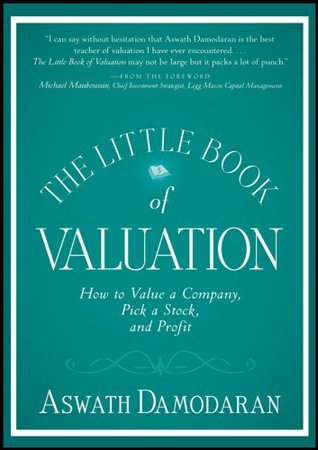More on this book
Community
Kindle Notes & Highlights
Read between
December 12 - December 14, 2016
Comparable firms: Even if all of the companies in a sector are growth firms, they can vary widely in terms of risk and growth characteristics, thus making it difficult to generalize from industry averages.
Base year values and choice of multiples: If a firm is a growth firm, the current values for scaling variables such as earnings, book value, or revenues may provide limited or unreliable clues to the future potential for the firm.
Analysts who use multiples to value growth firms may feel a false sense of security about their valuations, since their assumptions are often implicit rather than explicit. The reality, though, is that relative valuations yield valuations that are just as subject to error as discounted cash flow valuations.
The discounted cash flow models used to value growth companies need to allow for changing growth and margins over time. Consequently, models that lock in the current characteristics of the company do not perform as well as more flexible models, where analysts can change the inputs.
the size of the overall market for its products and services, the strength of the competition, and the quality of both its products and management.
35 percent next year, 25 percent in year two, and then tapering off as the firm gets bigger; the compounded revenue growth rate over the next 10 years will be 12.51 percent.
As the company grows, margins should improve.
As the firm grows, this will change and margins will decrease, as competitors emerge.
The first and most general approach is to estimate the reinvestment using the change in revenue and a sales-to-capital ratio, estimated using either historical data for the firm or industry averages.
For growth firms that have a more established record of earnings and reinvestment, we can estimate the growth rate as a product of the reinvestment rate and the return on capital on these investments.
2. Adjusted multiples: In the PEG ratio, the PE ratio is divided by expected growth in the future, to estimate a growth-adjusted version of the PE ratio. In effect, a firm that trades at a lower PEG ratio is cheaper than one that trades at a higher PEG ratio. Under Armour’s PEG ratio of just about 1 (20.71/20.90) is higher than the sector average of 0.65 (9.70/15), suggesting that it is overvalued.
Growth companies do not want to become mature companies and mature companies constantly try to rediscover their growth roots.
Firms in decline generally have little in terms of growth potential and even their existing assets often deliver returns lower than their cost of capital; they are value destroying.
Stagnant or declining revenues: Flat revenues or revenues that grow at less than the inflation rate are an indicator of operating weakness. It is even more telling if these patterns in revenues apply not only to the company being analyzed but to the overall sector, thus eliminating the explanation that the weakness is due to poor management.
Shrinking or negative margins: Declining firms often lose pricing power and see their margins shrink, as they lose market share to more aggressive competitors.
Asset divestitures: Since existing assets are sometimes worth more to other investors, who intend to put them to different and better uses, asset divestitures will be more frequent at declinin...
This highlight has been truncated due to consecutive passage length restrictions.
Financial leverage—the downside: If debt is a double-edged sword, declining firms often are exposed to the wrong edge. With stagnant and declining earnings from existing assets and little potential for earnings growth, debt burdens can become overwhelming.
The first is whether the decline that we are observing in a firm’s operations is reversible or permanent.
The book value of Las Vegas Sands’ fixed assets at the end of 2008 was $11.275 billion, but reducing the value by 40 percent to reflect the drop in real estate prices reported for Las Vegas between 2007 and 2008, and dropping it another 10 percent to reflect the need for a quick sale, results in a distress sale value of $6,089 million.


